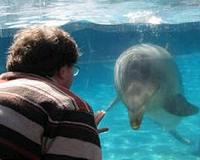 |
Arlington, Va. (UPI) Nov 18, 2010 The U.S Army says it is proceeding with technical upgrades to its force tracking system making it as much ten times faster than the existing system. In a statement, the Army said the new tracking system, Force XXI Battle Command Brigade-and-Below, will include new next generation software as well as a new, faster satellite network. The Global Positioning System, satellite-guided system provides military commanders and warfighters with location information and data about friendly and hostile forces on the ground. This facilitates coordination and synchronization of troops during operations and helps reduce the risk of friendly fire incidents. Users also can input and update operational graphics, including obstacles and terrain features in the area and the location of enemy troops. Bent on developing the system, the Army said it was preparing to deploy the high-tech, high-speed Blue Force Tracking 2, a force-tracking satellite-communications network. Although difficult to compare, said Lt. Col. Bryan Stephens, "it is roughly 10 times faster than the existing BFT system." "BFT 2 is full duplex, which means you can transmit and receive at the same time. It is an entirely different architecture," said Stephens. The current tracking system uses half-duplex capability, a term which means that it has only one-way transmission and cannot receive and transmit at the same time, a U.S. Army statement said. "BFT 2 data rates are exponentially faster than the current BFT." The project plans to reach the level of nearly 160,000 tracking systems in the Army within a few years. The system's prime contractor is Northrop Grumman and it aims to shorten the distance information has to travel before reaching command and control centers. "Today, if you transmit your position-location information in theater operations, it goes to a satellite and then to ground station. Then it is transmitted to a Network Operations Center in the (United States). The NOC sorts it all out and rebroadcasts. When you deal with satellites, you are dealing with latency, as information travels up and down a couple of different times," said Stephens. "With the BFT 2 system, we changed that architecture. Instead of going all the way to the NOC, information is going up and down to a ground station. That is much different than going through multiple satellite hops to get processed at the NOCs." The tracking system isn't only incorporated into ground combat vehicles, including tanks and personnel carriers, it is also fitted on aircraft, such as the Apache Longbow attack helicopter.
Share This Article With Planet Earth
Related Links Space Technology News - Applications and Research
 Sonar System Inspired By Dolphins
Sonar System Inspired By DolphinsSouthampton, UK (SPX) Nov 18, 2010 Scientists at the University of Southampton have developed a new kind of underwater sonar device that can detect objects through bubble clouds that would effectively blind standard sonar. Just as ultrasound is used in medical imaging, conventional sonar 'sees' with sound. It uses differences between emitted sound pulses and their echoes to detect and identify targets. These include submerg ... read more |
|
| The content herein, unless otherwise known to be public domain, are Copyright 1995-2010 - SpaceDaily. AFP and UPI Wire Stories are copyright Agence France-Presse and United Press International. ESA Portal Reports are copyright European Space Agency. All NASA sourced material is public domain. Additional copyrights may apply in whole or part to other bona fide parties. Advertising does not imply endorsement,agreement or approval of any opinions, statements or information provided by SpaceDaily on any Web page published or hosted by SpaceDaily. Privacy Statement |